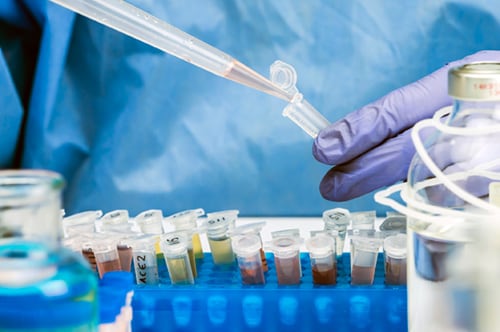Key points
- When a patient has diarrhea caused by Cryptosporidium, diagnosis of cryptosporidiosis can be made by testing stool specimens.
- Because detection of Cryptosporidium can be difficult, patients might be asked to submit stool specimens over three days.

Stool specimen analysis
Several germs, including the parasite Cryptosporidium, can cause diarrhea. To help determine which germ is causing diarrhea and how best to manage and treat the illness, healthcare providers can ask patients to give a stool specimen for lab testing.
Historically, to help diagnose cryptosporidiosis (diarrhea caused by Cryptosporidium), stool specimens have been examined microscopically using different techniques — such as acid-fast staining, direct fluorescent antibody (DFA), or enzyme immunoassay. Historically, tests for Cryptosporidium have not routinely been done in most laboratories; therefore, healthcare providers have needed to specifically request testing for this parasite.
DNA–based diagnostic test — such as polymerase chain reaction (PCR) — are increasingly used in reference diagnostic labs. PCR panels, which at same time test fora variety of different germs that cause diarrhea including bacteria, virus, and parasites including Cryptosporidium.
Infected people do not shed, or release, Cryptosporidium in their stool continually. To help detect Cryptosporidium in stool specimens, healthcare providers can tell patients to submit stool specimens over three days. Diagnostic lab tests cannot tell Cryptosporidium genotypes, species, and subtypes apart from each other. However, DNA fingerprinting–based techniques used by CryptoNet labs can do this technique.
